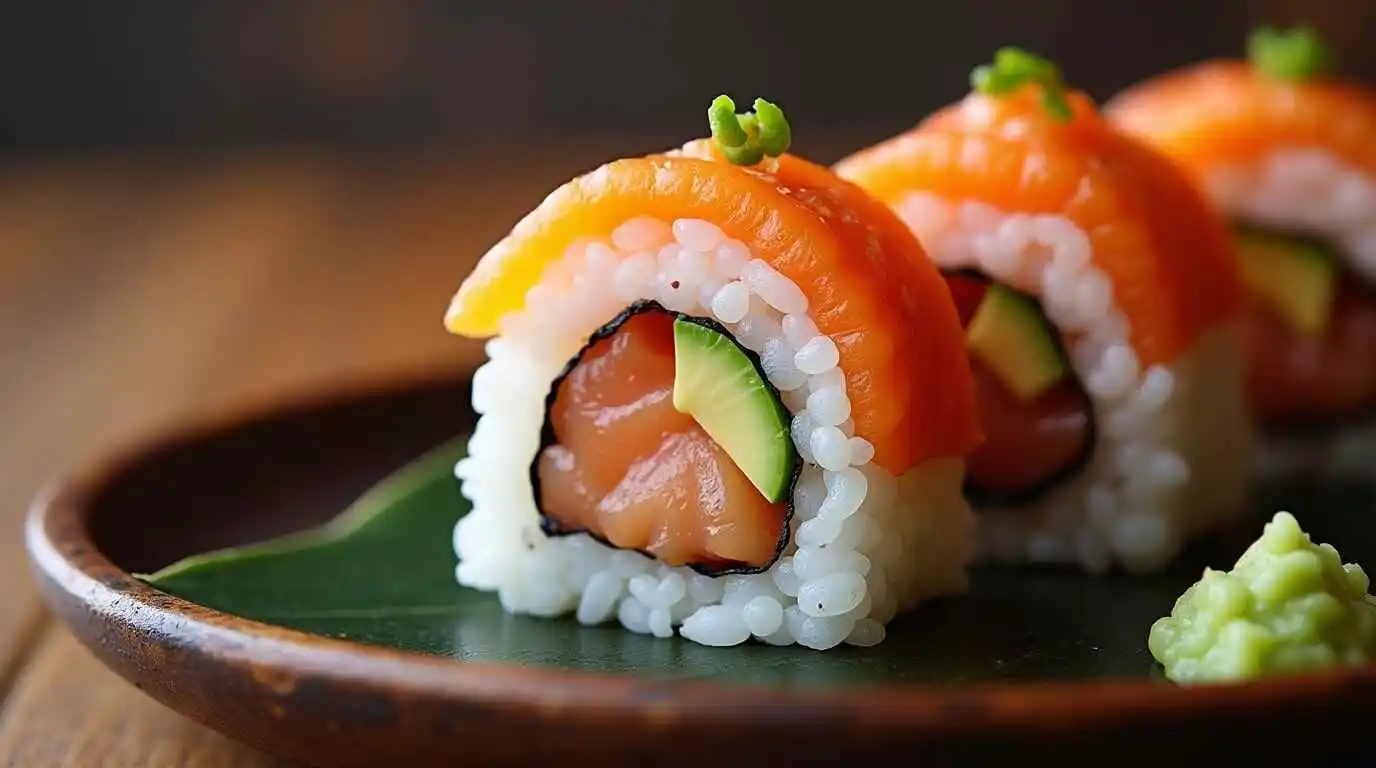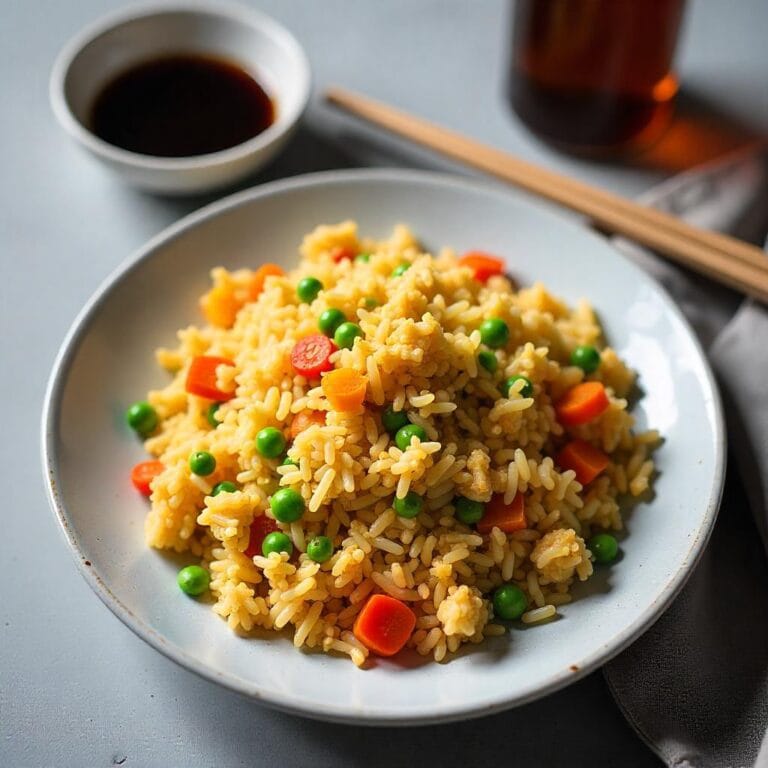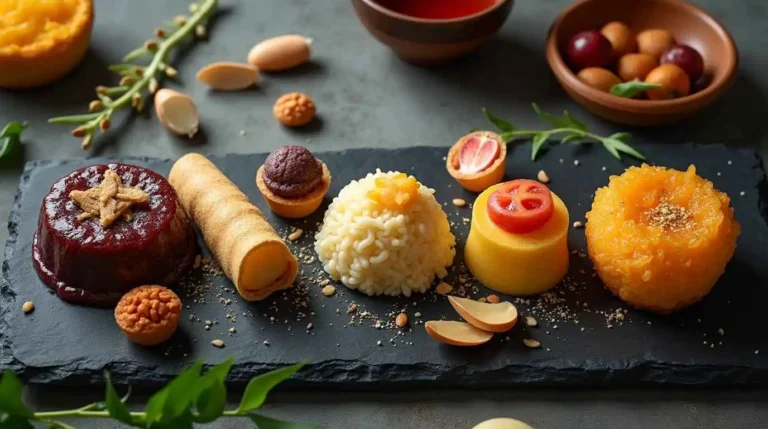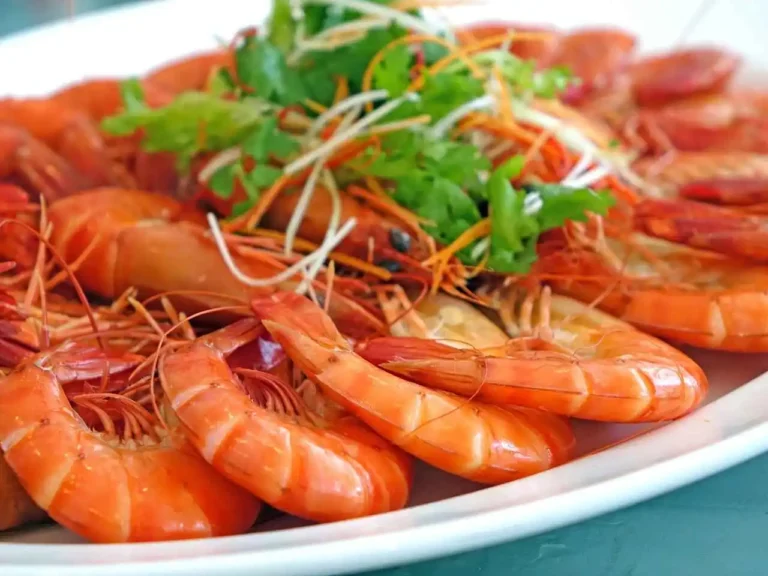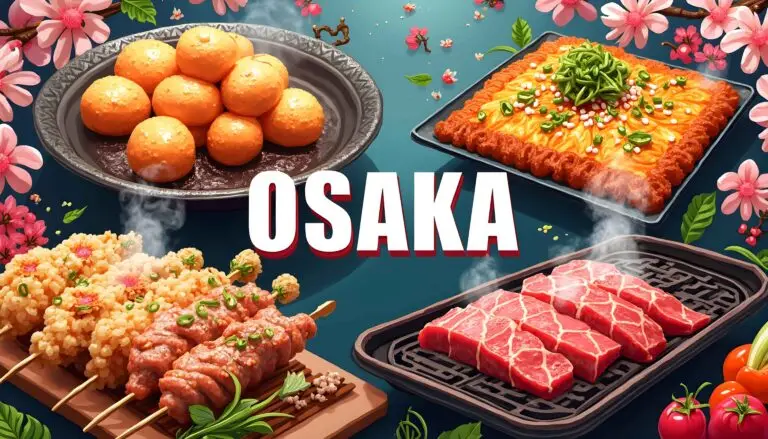Azuma Japanese Cuisine: Authentic Flavors Await
Before you enter Azuma Japanese Cuisine, you’re about to step into a culinary journey. Here, tradition and innovation meet. Japanese cuisine is widely recognized as a staple of many people around the world, drawing food enthusiasts from all over the globe.
Azuma presides over this food universe. It gives an actual taste pleasure – you’ll be yearning for more. We believe that by blending traditional flavors with innovative concepts, Azuma offers a unique experience to all its members.
Table of Contents
Key Takeaways
- Nourish your sense of good taste at Azuma Japanese Cuisine.
- Learn about Japanese food culture around the world.
- Discover how Azuma merges the old with the new.
- Appreciate the trend of Japanese food spreading all over the world.
- Come and Taste this London Exclusive! Now it’s your chance to try Azuma!
The Timeless Quality of Japanese Cuisine and Legacy
Japanese food has a lot to teach us, and is steeped in tradition. The country’s diverse regional landscapes have shaped its food culture. This diversity has created an abundance of choice when it comes to food.
Regional Influences in Japanese Cooking
There are significant regional variations in Japanese cuisine. Seaside places often emphasize seafood, mountains, local meats, and produce. This is because of their unusual shape.
The Philosophy Behind Real Japanese Tastes
Authentic Japanese tastes, however, transcend the ingredients themselves. They are also about simplicity, seasonality, and a respect for the natural world. It’s reflected in how we create and present our dishes, as well as in our emphasis on freshness and seasonality.
| Region | Specialty | Influencing Factor |
|---|---|---|
| Hokkaido | Shellfish, such as crab or salmon | Coastal location |
| Kyoto | Kaiseki (multi-course) meals | Cultural and historical context |
| Okinawa | One-of-a-Kind Ryukyu cuisine with influences from China and Southeast Asia | Geography and trade routes |
Being aware of these regional influences and philosophies broadens your perspective on Japanese cuisine. That also includes restaurants such as Azuma Japanese Cuisine or Sakura Japanese Cuisine, for sure.
What Makes Azuma Japanese Restaurant Different?
Azuma’s Japanese cuisine is unique for its blend of history and fresh ingredients. It’s from the culture of Azuma. This sets it apart from other Japanese fare, including Samurai Japanese cuisine.
Cultural Heritage Behind Azuma Dishes
Azuma- dishes have roots deep in the history and culture of the Azuma region. They indicate the plain and austere methods of old Japan – the Samurai da. It’s increasingly reflected in the way they eat, cook, and source local, seasonal ingredients.
“To me, cooking isn’t only for feeding the body, it’s cooking for the soul, for the heart.” – A Japanese kitchen proverb that reflects the spirit of Azuma cuisine.
Fundamental Ingredients and the Foundation ofAzuma Ryōrii
With Azuma Season, you take what you can grab from the ingredients in Season. This ensures meals taste fresh and delicious. More often than not, they are made with seafood, local veggies, rice, and miso.
Choose Healthy, Seasonal Ingredients
The seasons play a crucial role in Azuma cooking. Menus rotate as ingredients come into Season. This not only makes food better-tasting but is also suitable for local farmers, fishermen, and their employees.
| Season | Key Ingredients | Dishes |
|---|---|---|
| Spring | Well … get New bamboo shoots of vegetables | Tempura of spring vegetables, soup of bamboo shoot |
| Summer | Grilled fish, seasonal fruits | Grilled ayu, summer fruit salad |
| Autumn | Mushrooms, chestnuts | Rice with mushrooms and chestnuts, grilled matsutake |
There is no other Japanese like Azuma. It is about culture and seasonal ingredients. That means diners get an authentic taste of Japan’s traditions and flavors.
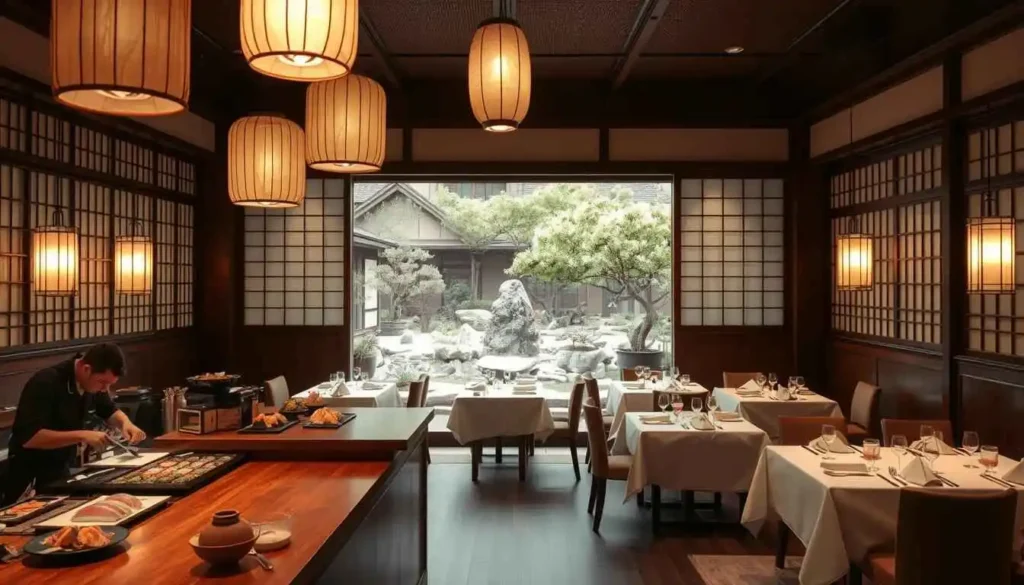
Must-have Tools and Tastes of your Azuma Kitchen
If you want to take Azuma flavors home, you’ll need some of the traditional tools and pantry staples. Visitors to Azuma are encouraged to create their own Azuma kitchen by selecting the best cookware, utensils, and ingredients. These would have to embody the heritage of the cuisine.
Ingredients You’ll Need for Traditional Japanese Cookware
The right cookware is essential for authentic Azuma cooking. That’s where Azuma, a gamy cuisine (as opposed to across-the-duty-course cooking) comes into play; but with Azuma, we’re not talking aboutella sushi-style Japanese here, with raw fish every which way but in a sent box. You will need different pots and pans.
For dishes such as teriyaki and tempura, a cast-iron teppan or a good-quality stainless steel pan is ideal.
Knife Selection and Care
A decent knife is paramount to any kitchen in Japan. “The Debba knife is fantastic for chopping and slicing,” Azuma said. It is essential to keep your knife clean, sharpen it regularly, and store it correctly.
Authentic and Tasty Pantry Staples You Need To Try
The pantry staples in Azuma cuisine are similar to those in Ginza Japanese cuisine, but with their unique flair. You will need short-grain Japanese rice, miso paste, and sesame oil. These ingredients are central to several Azuma dishes, and they are the reasons why these dishes have a distinct taste and texture.
Where to Buy Specialty Ingredients from the USA
The right ingredients can be hard to come by, but many Asian markets have begun to stock Japanese products. Small stores don’t stock the same wide variety of imports that online retailers do. When shopping, look for items labeled with some variation of “sushi” and “sashimi” to ensure authenticity.

Basic Techniques for Mastering Azuma Japanese Cooking
Azuma Japanese Cuisine is about simple, precise methods. To become skilled, you must learn the basics. These separate kits separate it from other Japanese cuisines, such as Samurai Japanese cuisine.
Tips on how to make the correct rice
Rice is central and evident in Azuma Japanese Cuisine. How to Get Japanese Rice Right Japanese rice, or japonica, has a short translucent grain. You think it through thoroughly, rinse it well, use the correct water, and cook it just right.
Unlike Samurai cuisi, which uses highly polished, elegant-looking Asumas, the approach is about simple, high-quality rice.
Selection of fish and handling procedures
The selection and care of seafood is critical at Azuma Japanese Cuisine. The fish must be fresh and of good quality. You must keep it properly, treat it tenderly, and fillet it with precision.
Sashimi and sushi both depend on freshness for their taste and mouthfeel.
The Japanese Knife Skills You Need to Know
Knife technique is essential in Japanese cuisine, including Azuma cuisine. Having a good knife is the difference between night and day in that preparation work. You are taught how to cut and how to keep your knife sharp.
It requires such precision that it’s akin to the art of Samurai Japanese when it comes to cutting and presentation.
Staying Safe During Knife Use
Safety always comes first while using sharp knives. I keep my fingers curled under, employ a steady cutting board, and cut away from me.
“A sharp knife is a safe knife,” goes the refrain in many Japanese kitchens — meaning you need to have sharp edges so you don’t accidentally cut yourself.
With these basic methods, you’ll be able to prepare genuine Azuma Japanese Cuisine in no time. The combination of classic techniques and high-quality ingredients will elevate your cooking. It will allow you to enjoy authentic Azuma dishes at home.
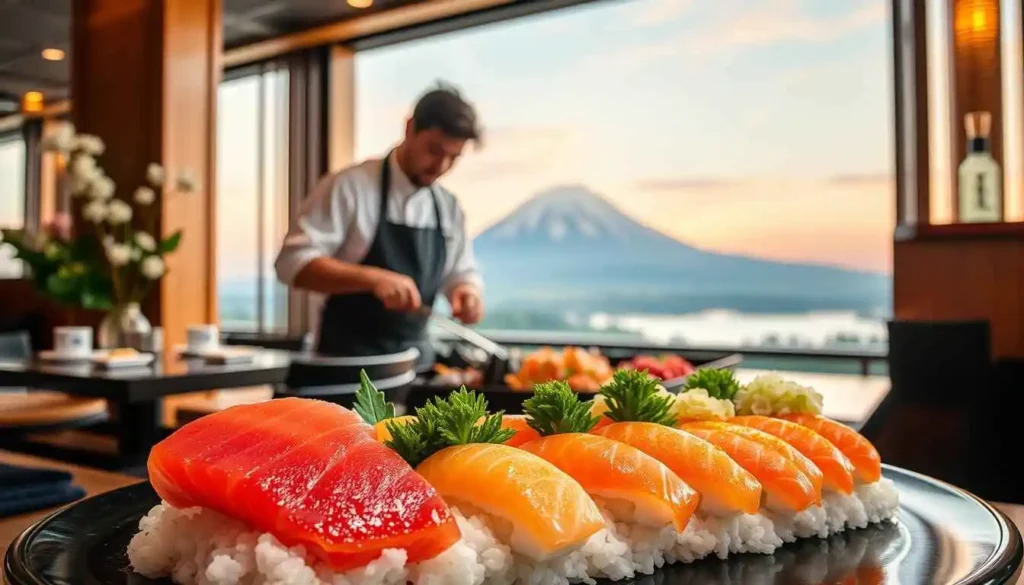
How to Prepare Our Signature Azuma Dishes Recipe
There are a few key techniques to master to enjoy Azuma Japanese cuisine at home. The above is Azuma’s concept of the meal: always using fresh ingredients, employing natural cooking methods, and serving visually appealing dishes. Once you’re proficient in those recipes, you can create delicious meals that showcase Azuma’s signature flavors.
How to Make the Perfect Sushi Roll at Home
Sushi rolls are something that you can get pretty good at making at home with practice, but the truth is, you can end up in great results territory. Begin with short-grain Japanese rice, the foundation of good sushi. Season it with rice vinegar, sugar, and salt for added flavor. When rolling the rolls, use a bamboo sushi mat to form and compress the ingredients.
Even sushi pros wrestle with difficulties. Problems such as mushy or dry rice, ingredients that tumble, or scuffed nori can occur. To bypass those, treat the rice with care, fill with the appropriate amount and briefly toast the nori.
Crafting Delicate Tempura
Tempura is a Japanese favorite — seafood or vegetables lightly battered and fried. For something delicate like tempura, opt for a light batter made from flour, water (sometimes eggs). Don’t overmix the batter as it will be light. Fry at the correct oil temperature and don’t overfill the pot.
Advanced Teriyaki and Glazing Skills
Teriyaki is a cooking technique that involves grilling or broiling meat or fish in a soy-based marinade. To master teriyaki, create a good marinade and cook things at the correct temperature. Glazing creates a caramelized layer by brushing sauce over the ingredients as they cook.
With those skills, you can create many delicious Azuma recipes. Whether it’s sushi, tempura or teriyaki, focus on fresh ingredients and painstaking preparation and cooking.
How Azuma Japanese Cuisine Stacks Up to Other Styles
7, 1999)\fnref Exploring Japanese food, you find that Azuma Japanese Cuisine distinguishes itself. What makes it special is its distinctive flavors and style. This becomes evident when you compare it to other types of Japanese cooking.
Variations in Azuma and Sakura Japanese Food
Azuma Japanese Cuisine serves flavors that are rich and savory. The sakura palette, however, is gravity-defying and delightfully fragile. This frequently incorporates cherry blossom motifs. This illustrates the diverse range of regional influences in Japanese cuisine.
Difference between Samurai and Ginza Cooking Style
Samurai cooking is known for its rustic, simple dishes. These are the practical needs of the warrior class. Meanwhile, Ginza cuisine is known for its elaborate presentation and refined ingredients. Azuma ensures that the cuisine not only tastes good but also looks appealing.
What makes Azuma different from Fuji Sushi Japanese Cuisine
Fuji Sushi is known for its fresh, quality sushi. It frequently incorporates ingredients from the Mount Fuji area. Azuma Japanese Cuisine is also rooted in freshness, but it utilizes a more straightforward approach to cooking methods and ingredients. This is one of the ways it diverges from Fuji’s focus on sushi.
Overall, Azuma Japanese Cuisine combines an interesting blend of tastes and styles. This makes it distinct from other Japanese cuisines. It’s the little details of this kind that help you understand the depth of Japanese cuisine.
Crafting the Perfect Azuma Dining Experience
You can’t appreciate Azuma’s brand of Japanese without understanding what makes it distinctive. Sakura and Cherry Blossom. The Japanese word for cherry blossom is sakura. However, what Azuma is interested in is the combination of flavors and how food is presented.
Traditional Plating and Presentations
Their taste follows the artful presentation of Azuma dishes. Serve your meal on traditional Japanese plates and decorate them with Japanese-inspired items for authenticity. In contrast to Fuji Sushi, Azuma’s plates are more seasonally vibrant, and their seasonality occasionally reflects the Season.
- Opt for natural materials, such as wood and bamboo, for a natural, earthy vibe.
- Add seasonal flowers or leaves for garnish.
- And balance the texture and color in a well-composed image.
Seasonal Decorative Elements
Azuma dining is seasonal dining, pure and simple. One way to do this is by using single decorations on your table, which indicates this.
The seasons + Azuma Flavors to Learn. Here’s what I like to drink with Azuma!
Selection of the right drink is crucial in Azuma cuisine. Sake is the traditional beverage, but you may also want to give greetry or Japanese beer a try.
Br Hoto: Choose a Suitable Sak.
Here’s some advice for novices to sake:
- Begin with a junmai or honjozo sake for a robust, full flavor.
- Experiment with varying temperatures to find what you like.
- Match lighter sakes with lighter dishes, and fuller-bodied sakes with heartier food.
Your Guide to Mastering Azuma Japanese Cuisine at Home
All right, keep learning about Azuma Japanese Cuisine, but remember it takes a long time and hard work to become a master. You’ve read about its proud history, its specialty flavors, and its crucial tools. Now, however, it is time to put these skills to the test and experiment with new recipes.
Based on Azuma Japanese Cuisine, you might also like Ginza Japanese Cuisine, which builds on what you’ve learned. The techniques you’ve learned will enable you to identify the distinctive characteristics of different styles of Japanese cuisine.
Don’t be afraid to experiment, to make Azuma recipes your own. There are so many things to make in Japan. Just keep practicing, experimenting, and having fun on your journey to mastering Azuma Japanese Cuisine in your home.

